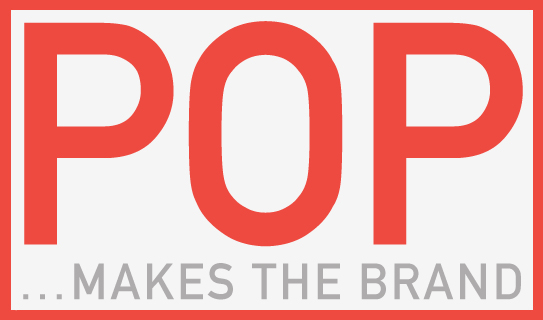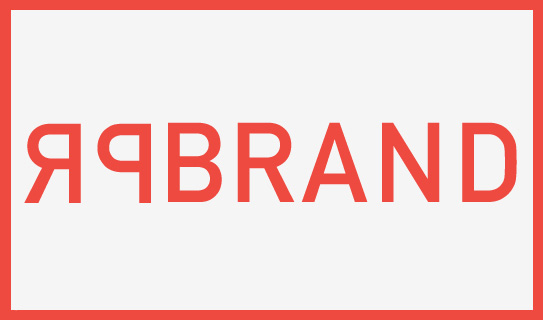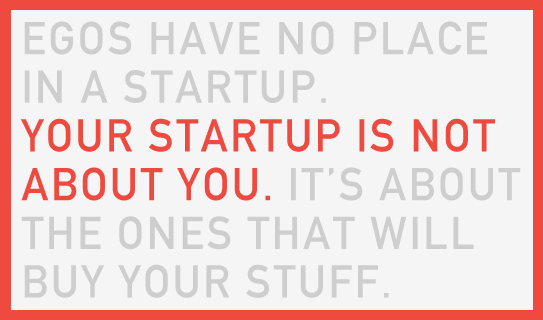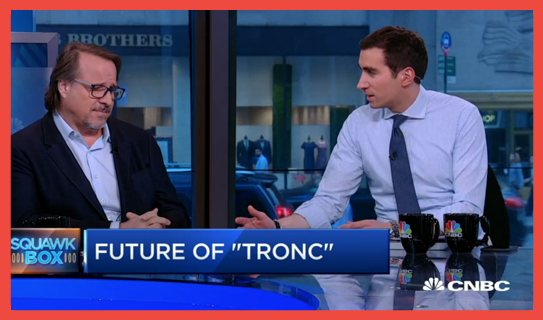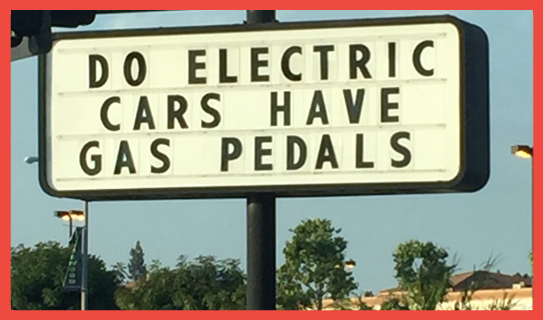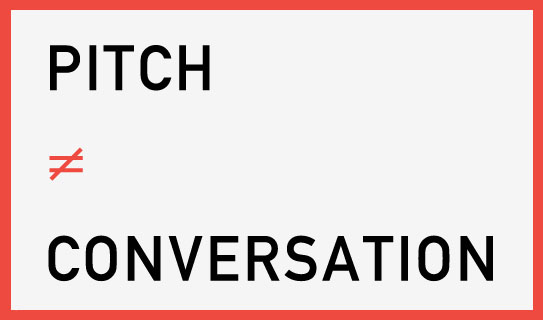Author Archives: Fabian Geyrhalter
How to Gain Swift Stakeholder Buy-in During the Early Stages of your Brand Creation
Just as “no man is an island,” no entrepreneur or CMO exists in a vacuum. We naturally seek the advice of our coworkers, friends, family, and mentors. Validation and constructive criticism are crucial in developing a brand. However, one can easily upset this delicate balance either by ignoring the counsel of others or seeking the opinion of everyone. This step in the process is a rather slippery slope, but we have devised some tips and tricks to save you time, money, and sanity. An important issue that gets overlooked too often by entrepreneurs and CMOs is getting buy-in at the right times and from the right people. Appropriate timing and knowing whom to involve are key differentiators between smooth sailing with a set destination and being adrift with no land in sight (as it pertains to your launch).
Branding Your Venture: Seen It All? Listen Up!
It may seem as though I have been suffering writer’s block so far this year, but fear not as I am knee-deep into writing my second book, which I am excited to share more about in the months to come. This is my excuse: writing has kept me from writing, but – better late than never – here I am wishing you a Happy New Year! Besides writing during the holidays I did what most do as they start winding down: I was glued one too many hours to my Facebook timeline. Filtering through the current war in politics to find the few posts of friends that were non-political in nature turned productive once I saw my friend Chris’ hilarious post: Chris was on a plane with his wife, noting he got a free upgrade to first class, and, without hesitation, left her behind in Economy to live the good life. I was intrigued and awaited the backlash in the comments box, which sure enough came trickling in one after another at mesmerizing speeds. His reply? “I can’t hear you over the bubbles of the champagne.” I thought it was witty, hilarious and it evoked an immediate sense of space and time. It made me recall the sound of champagne (as well as the witty POP champagne brand named after the sound of the cork popping – and for being a ‘Product Of Pommery’) and it made me recall memories of many great celebratory situations and, yes, the times I too got my …
When Something Isn’t Broke, Fix It: Restarting Your Brand At Its Height
This article was originally published on Forbes on 10/20/16. Do you know that feeling when you are so inspired by something that you’re left speechless, puzzled and somewhat confused? Perhaps you’ve experienced it from a natural wonder, an incredible speech, a mind-blowing innovation you read about, or simply something your newborn does. Well, I had that moment while watching Netflix. I know that sounds peculiar, but when I watched the first episode of Netflix’s second season of “Chef’s Table,” the show that dives deep into a specific renowned chef’s way of thinking, it took me a day or so to sort everything I learned into nuggets of insight. The episode starred American superstar chef Grant Achatz. But it wasn’t the balloon cheese dessert, the fact that he overcame cancer (stage 4 squamous cell carcinoma of the mouth) and was known for years as “the chef who couldn’t taste,” or his quest to reinvent meals daily that inspired me. It was his relentless creative drive that left me speechless. His quest to transform something (food, in his case) into an emotional experience is remarkable; this is also why I do what I do at my brand consultancy. When I work with startup entrepreneurs on deriving their new venture’s philosophy and shaping their brand’s strategy, voice and image, triggering emotions is key to this journey – and to my own overall personal happiness. The fact that Achatz would have considered his first restaurant a failure unless it would quickly turn into one of the …
Public Relations And Brand Overlap Far More Than You Think
This article was written by Rebekah Iliff and was originally published by Forbes on 09/01/16. In below article, Rebekah Iliff, Chief Strategy Officer at AirPR, discusses the intersection of branding and PR; an intersection too obvious to ignore, yet one that remains ignored too often. With her permission, and as my book is being referenced throughout (well, thank you!), I now like to share her thoughts with the readers of The New Brand Post. It goes something like this: Without intending to, a company’s departments sometimes end up working in ineffective silos. A tech team without communications professionals can’t shed light on their achievements uber-effectively. An innovative ASMR advertising campaign can’t get many kudos without public relations, and the news of a rebrand can’t spread as fast organically as it can with media outreach. Stitching together cross-functional teams leads to greater innovation and opportunity. At the same time, there’s a bit of a stigma about bringing too many cooks into the kitchen. Does your art director really need to help approve the imagery you’re sending to a journalist? Does your public relations department really need to know if the copy team is writing a spur-of-the-moment April Fool’s Day display ad before it goes live? In both situations, the answer is yes. It may take longer to loop in other teams, but it’s worth it. Which brings us to two teams that frequently overlap without many people realizing it: public relations and brand strategy. These teams are often severed from contact, even though it’s paramount that they work …
How To Launch A Brand: Lose The Ego, Gain A Soul
This interview with Fabian Geyrhalter, Principal of FINIEN, was originally published in The Huffington Post 07/15/16. Chances are, if you’re a startup or a small business, at some point you’ve asked yourself: “How do I effectively launch my brand?” While there are quite literally hundreds if not thousands of ways to get the word out these days, the truth is, unless you have a solid foundation from which to launch, your company could very well end up face-down on the pavement. In other words, if your brand lacks the necessary qualities to attract and retain loyal customers you may need to rethink your strategy. As someone who constantly thinks about these things, I thought it would be fun to sit down with my friend and branding-savant, Fabian Geyrhalter, Founder and Principal of FINIEN. His Los Angeles-based consultancy specializes in turning ventures into booming brands. I’ve had a front row seat to his genius over the last few years, and watched brands he’s advised go from “zero to hero” in a very short period of time. Some have become market leaders, while others have sold to huge companies. Although his branding prowess wasn’t the only factor in these successes, I have no doubt it played an important role. So whether you’re looking to refresh a brand you dreamt up three years ago or are starting from scratch without a website your business can call home, listen closely to what Fabian G. has to say. Here, I pick his brain on all things …
Why We Should Not Ridicule Re-Branding Exercises, Yet Why Tronc Deserved It
Naming a company, any company, is not an easy task. Branding is the first thing your audience will be exposed to, that is especially true when it comes to the name. A name you can’t re-launch like a campaign, a site or even periodically a logo. You better not change it at all. It’s like with your child; you can advise on clothes and friend choices as they hit puberty, but that name you gave them, that will stick forever. So yes, it’s very, very darn important. Late last week I was contacted by LAist about the (by now infamous) name Tribune Publishing gave itself in a (presumably) hasty re-branding exercise, given they were in a legal battle. Below is what I shared with the reporter, and now with you: Here are some of the many rules I apply when crafting a company name and here is how our new f(r)iend tronc measures up: #1 Short and easy to pronounce, easy to spell Got that one right…yet many will misspell it as ‘tronk’ based on ‘trunk.’ #2 Available .com I hope that’s not the look of a large publishing group, so they might still be in talks to purchase the domain. Oh, wait, it actually is the real tronc. Maybe we should move the conversation over to talk about the logo at this point? Makes me wonder, does this site work in Netscape? #3 Passes the Google test They got enough press very quickly that they dominate the …
Does Your Innovative Brand Look…Innovative?
I see this sign every time I drive to my gym (I leave it up to you to guess how often that is, but let’s say it’s not as frequent as it should be). A tire company put it up and it always makes me smile and think about how wonderful of an industry I am working in; being able to collaborate with innovators, playing a part in what’s next, shaping the future one brand at a time. That sign also shows how, as an invention, the electric car category had to re-invent everything, including the industry terminology. (Electric cars do not have gas pedals, they have accelerator pedals). And this brings me to my point: If you are starting an inventive, innovative – or may I even use the term – disruptive brand, does your visual (or verbal) identifier indicate that? Is your brand identity in line with your product or service, or is it falling right smack into the ‘Silicon Valley Crap Trap?’ What is that you ask? Let me visualize it for you: Now that is the Silicon Valley Crap Trap (pictured a few years back, a more modern take can be seen here). All of these companies were innovative tech startups, all were real disruptors (yes, even vimeo). They worked hard to kick the status quo in its behind with their products, yet why did they all look the same, in that same crappy and uninspired way? Lack of money? Lack of inspiration? Lack of design skills? None make a good excuse given these …
Vision Critical: How to Cut Through The Brand Statement Clutter
Creating a positioning statement, a mission statement and a vision statement. Not to mention the mighty elevator pitch. It can drive Founders of new, and CMO’s of not so new ventures completely insane. Rightfully so. How much do they really differ? Which comes first? How do I translate one into another? Does anyone really care, or will I only create statement confusion, brand angst or promise dizziness amongst my team and my audience? Start with these 2 steps in order to not go insane while you craft what really should be a wonderful A-HA experience for yourself and your team: 1. Get The One And Only Statement You Will Never Publish Right You won’t use your positioning statement ever; in public that is. Yet, this is the very sentence that will drive everything about your brand. The positioning statement is your brand in a one sentence statement. It’s not a quick read (most often it’s a mouthful) and it is not meant to be outward-facing. This one is for your eyes only. It is crafted so you can base any and all other brand statements on it. It is everything about your brand: The who, the how, the what and the all-important why. A business plan disguised in a brand coat. 2. Fuse Mission And Vision Statements Into One – The One And Only You Will Publish Once you have the positioning statement noted, translate it into a vision/mission statement combo. Yes, in my eyes they can be one and the same; it’s all you …
Coin It: 3 Reasons Why Your Venture Needs To Develop Nomenclature
Getting a venture off the ground is tough. Competing against similar startups and established players along the way is even tougher. One tool to add to your ‘brand insurance box’ (you know, the things you do that make your venture a strong brand) is also one of the simplest and most valuable branding efforts you can undertake: creating a term you can own. Below I outline 3 reasons why owning your language will leave a quantifiable mark on your brand: 1. It Differentiates You From Your Competitors Don’t come up with a term for branding’s sake, rather evolve it naturally. The last thing you want to do is to confuse your customer with strange lingo, instead you want to inform and educate. Think of industry terms that are being used within your segment by your customers – are they all clearly saying what you’d want them to say, or are some misguiding, perhaps even outdated based on the solution your venture offers? Some you might flat-out hate or poke fun at regularly for good reason. I, for instance, hated the term ‘brand collateral’ to describe the pieces a brand uses to communicate its brand values, visuals and language to clients, consumers and prospects. During the process of writing the book ‘How to Launch a Brand,’ I demanded a better term for the visual and verbal brand communication pieces and I coined the term ‘Brand Atmospheres.’ To me it made for a much stronger and all-encompassing description that felt logical rather than confusing. I trademarked the term, linked …
Re-think Your Elevator Pitch: How To Successfully Introduce Your Brand In Conversation
It’s not that you don’t need to think about your elevator pitch, but I want you to think differently about it. Like everything in your business, you should not focus on the what, when and how initially, but think about the why instead. You are seeking a specific outcome. What is that outcome? The answer is simple: You need to get people to understand what you do and you’d like them to care about it; perhaps care enough to start seeing you as a prospect to conduct business with, but at the very least enough to continue the conversation with you rather than dashing away towards a more interesting crowd – the crowd that does not pitch them, but that stimulates meaningful conversations. That is the kind of crowd you need to embody. Why should a good conversation include a trained, and most often awkward, pitch? Don’t spend time writing your elevator pitch line, instead think about how you could trigger a question in the person that asked about what you do. Don’t make it into a question (because that really is a pitch), but into a statement that triggers a question. Don’t craft a monologue sentence about your venture’s operations and target audience, instead think about how you would tell a new friend after a long dinner (potentially with a few alcoholic beverages involved) once they ask ‘So what do you do for a living?’ I bet the answer would not be your trained elevator pitch, instead it would be a very casual …
